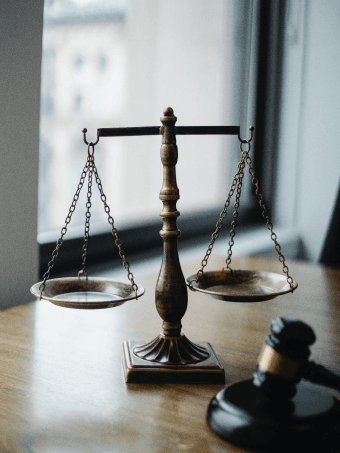What is Trademark Infringement?
Trademark infringement occurs when a person or entity uses a trademark that is identical or confusingly similar to a registered trademark owned by another party, without permission. This unauthorized use can cause confusion among consumers regarding the source of the products or services, potentially harming the trademark owner’s brand and reputation.
Trademark protection in the United States is governed primarily by the Lanham Act (Trademark Act of 1946). This federal law provides the legal framework for trademark registration, enforcement, and remedies available for infringement. Additionally, state laws offer supplementary protections.
Types of Trademark Infringement
Understanding the different types of trademark infringement can help you recognize if it’s happening to you or if you’re inadvertently infringing on someone else’s trademark.
Direct Infringement:
- Direct infringement involves using an exact or highly similar trademark to the registered one, leading to consumer confusion. This can include unauthorized use of logos, brand names, or slogans that closely resemble the protected trademark.
Dilution:
- This happens when the unique quality of a famous trademark is weakened, even without causing confusion. For example, if someone uses the name “Coca-Cola” on unrelated products, it can dilute the brand’s distinctiveness.
Counterfeiting:
- Counterfeiting refers to making and selling fake products using a trademark that is identical or nearly identical to a registered trademark. This is a severe form of infringement and is often associated with poor-quality goods.
Penalties for Trademark Infringement
When it comes to penalties for trademark infringement, they can vary based on the nature and extent of the infringement. Often, the first step in addressing trademark infringement is sending a cease and desist letter. This letter formally requests the infringer to stop using the trademark immediately. If the infringer complies, it can sometimes prevent further legal action. However, if the infringement continues, more severe actions can be taken. Courts may issue injunctions, which are orders to stop the infringing activity. These can be preliminary, halting the activity temporarily while the case is being decided, or permanent, stopping the infringer from using the trademark indefinitely.
Financial penalties are also common in trademark infringement cases. The infringer might be required to pay actual damages, compensating the trademark owner for financial losses suffered due to the infringement. Additionally, the court may order the infringer to give up any profits made from the unauthorized use of the trademark. In cases involving counterfeiting, statutory damages can be awarded, ranging from $1,000 to $200,000 per counterfeit mark, per type of goods or services, with amounts increasing significantly if the infringement is willful.
The legal costs associated with defending a trademark can be as substantial, and in some cases, the infringer may be ordered to pay the trademark owner’s attorney’s fees and court costs. Furthermore, courts can mandate the destruction of all products, packaging, labels, and other materials bearing the infringing trademark.
Takeaway
Trademark infringement is a serious issue that can have substantial consequences. As a small business owner, it’s essential to understand what constitutes trademark infringement and the potential penalties. By protecting your brand through trademark registration and respecting others' trademarks, you can avoid legal troubles and maintain a strong, reputable business. If you suspect someone is infringing on your trademark or receive a cease and desist letter, it’s wise to consult with a legal professional to navigate the situation appropriately. This proactive approach will help safeguard your business and ensure that your brand remains protected.
FAQ
1. What should a business do if it thinks someone is using its trademark without permission?
If a business believes someone is using its trademark without permission, it should first collect evidence of the unauthorized use, such as screenshots of websites, photos of products, or copies of advertisements. After gathering evidence, the business should consult a trademark lawyer to confirm the infringement. The lawyer can send a cease and desist letter, asking the infringer to stop using the trademark. If the person or company continues to use the trademark, the next step could be to file a lawsuit in court to stop the activity and seek compensation. Keeping a detailed record of all evidence, communications, and legal actions is important.
2. Can a business protect its trademark even if it’s not officially registered?
Yes, a business can protect its trademark even if it’s not officially registered, but it’s more challenging. In the U.S., businesses get some rights to a trademark just by using it in commerce, but these rights usually apply only to the area where the trademark is actually used. While a business can still go to court to stop others from using its unregistered trademark, proving ownership and the extent of its rights can be harder than if the trademark were registered. Registering a trademark in the US provides stronger protection, including nationwide rights and easier access to federal courts.
3. What arguments can someone use if they are accused of trademark infringement?
If someone is accused of trademark infringement, they can use several arguments to defend themselves. One common argument is that the trademark is generic or too descriptive, meaning it isn’t distinctive enough to be protected. Another possible defense is claiming fair use, which allows people to use a trademark for purposes like news reporting, commentary, criticism, or comparative advertising without needing permission. They might also argue that there is no chance of confusing customers because the trademarks are different enough, or because the products or services are not similar.


